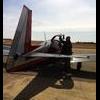SFO to HNL VFR or IFR?
-
Members Online
- MooneyMunnerlyn
- 47U
- DonMuncy
- Tyler G
- Skates97
- MaxwellSmart86
- Birdheadevo
- GoDemonDeacons
- Rwsavory
- Mooney-Shiner
- NickM20F
- Meshach
- Scottknoll
- kortopates
- GeeBee
- Schllc
- redbaron1982
- Igor_U
- TangoTango
- Parker_Woodruff
- Lmiller737
- Aerodon
- Greg_D
- Mark Staggs
- TCC
- mluvara
- A10haSnackbar
- banjo
- good2eat
- ad5ut
- DXB
- togapilot
- Marauder
- Andy95W
- wcb


Recommended Posts